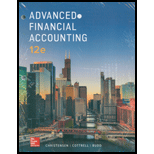
What types of circumstances would encourage management to establish a complex organizationalstructure?
Complex organizational structure
A complex structure means an organizational structure of larger size having higher number of resources in divisions, teams or projects. An organizational structure can be complex due to multiple steps in a process, multiple stakeholders, etc.
To explain: Circumstances that will encourage the managementto choose a complex structure.
Answer to Problem 1.1Q
Circumstances like possibility of businessexpansion, an increase in profits, risk reduction, attaining some tax benefits will encourage management to establish a complex organizational structure.
Explanation of Solution
A complex organizational structure has higher number of divisions and it is bigger in size. Many circumstances or situations can encourage management to form a complex structure for the organization. Some of them are:
1 Possibility of expansion: If management will find an opportunity to expand its operations, to grow and to earn more profits then, it would consider choosing a complex structure and will increase its resources.
2 Possibility of earning more profits: If a situation occurs that require structure of the organization to be bigger or complex and that can make higher profits for the company then management can consider forming a complex organizational structure.
3 Possibility of risk reduction: Management can establish a complex structure by investing in different activities and diversifying its operations to reduce the risk.
4 Possibility of using some tax benefit techniques: If a situation occurs that require organization to operate in complex structure but that can give some tax benefits to the company then management would choose complex organizational structure.
Want to see more full solutions like this?
Chapter 1 Solutions
ADVANCED FINANCIAL ACCT.(LL) >CUSTOM<
- I am looking for help with this general accounting question using proper accounting standards.arrow_forwardGeneral accountingarrow_forwardHewlett Automotive has 850 million shares outstanding with a share price of $72.50, and $38 billion in debt. If in four years, Hewlett has 900 million shares outstanding trading for $84 per share, how much debt will Hewlett have if it maintains a constant debt-equity ratio?arrow_forward
- At the beginning of the year, Andrews Corporation has assets of $240,000 and equity of $175,000. During the year, assets increase by $95,000 and liabilities increase by $72,000. What is the equity at the end of the year? Need answerarrow_forwardHi expert please given correct answer with accounting questionarrow_forwardI am trying to find the accurate solution to this general accounting problem with appropriate explanations.arrow_forward
 Accounting Information SystemsAccountingISBN:9781337619202Author:Hall, James A.Publisher:Cengage Learning,Principles of Accounting Volume 2AccountingISBN:9781947172609Author:OpenStaxPublisher:OpenStax College
Accounting Information SystemsAccountingISBN:9781337619202Author:Hall, James A.Publisher:Cengage Learning,Principles of Accounting Volume 2AccountingISBN:9781947172609Author:OpenStaxPublisher:OpenStax College Auditing: A Risk Based-Approach (MindTap Course L...AccountingISBN:9781337619455Author:Karla M Johnstone, Audrey A. Gramling, Larry E. RittenbergPublisher:Cengage Learning
Auditing: A Risk Based-Approach (MindTap Course L...AccountingISBN:9781337619455Author:Karla M Johnstone, Audrey A. Gramling, Larry E. RittenbergPublisher:Cengage Learning Cornerstones of Cost Management (Cornerstones Ser...AccountingISBN:9781305970663Author:Don R. Hansen, Maryanne M. MowenPublisher:Cengage Learning
Cornerstones of Cost Management (Cornerstones Ser...AccountingISBN:9781305970663Author:Don R. Hansen, Maryanne M. MowenPublisher:Cengage Learning Principles of Cost AccountingAccountingISBN:9781305087408Author:Edward J. Vanderbeck, Maria R. MitchellPublisher:Cengage Learning
Principles of Cost AccountingAccountingISBN:9781305087408Author:Edward J. Vanderbeck, Maria R. MitchellPublisher:Cengage Learning Managerial AccountingAccountingISBN:9781337912020Author:Carl Warren, Ph.d. Cma William B. TaylerPublisher:South-Western College Pub
Managerial AccountingAccountingISBN:9781337912020Author:Carl Warren, Ph.d. Cma William B. TaylerPublisher:South-Western College Pub





